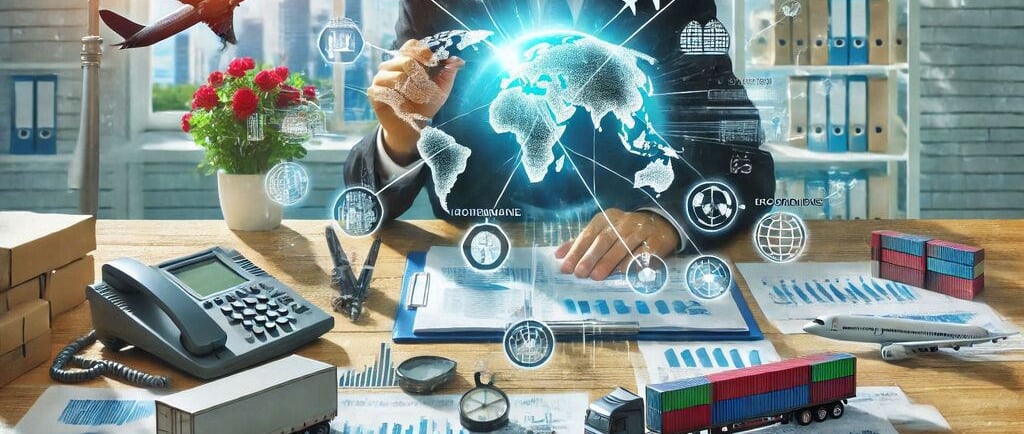Let us collaborate to foster global growth and development together.
Expert Tips for Navigating Trade Regulations in Different Countries
Navigate trade regulations effectively with expert tips. Learn how to stay compliant across different countries with practical strategies for smooth international trade.
10/31/20244 min read


Meta Description: Navigate trade regulations effectively with expert tips. Learn how to stay compliant across different countries with practical strategies for smooth international trade.
Expert Tips for Navigating Trade Regulations in Different Countries
International trade offers tremendous opportunities for businesses, but it comes with its share of complexities, particularly around trade regulations. Whether you are an entrepreneur expanding your business overseas, a professional responsible for sourcing international products, or someone interested in global markets, understanding trade regulations in different countries is crucial to avoiding pitfalls. The good news is that with the right strategies and mindset, you can successfully navigate these regulations with ease.
In this article, we’ll guide you through expert tips for understanding and navigating trade regulations in various countries. We’ll cover essential concepts, offer practical insights, and provide you with useful tips to streamline the process. By the end, you’ll have the tools you need to stay compliant and ahead of the competition.
Understanding Trade Regulations: The Foundation for Global Trade
Trade regulations refer to the set of rules that govern how goods and services are traded between countries. These regulations are crucial for maintaining fairness, security, and stability in international markets. However, they vary from country to country and can significantly impact your business’s ability to enter or operate within foreign markets.
The primary goal of these regulations is to control the flow of goods and services across borders, ensuring that they meet both safety standards and compliance requirements. Below are the key areas covered by most trade regulations:
Import/Export Licenses: Governments often require licenses to import or export specific goods. The type of license depends on the product, country of origin, and other factors.
Customs Duties & Tariffs: Different countries levy varying import/export duties and tariffs, affecting the cost of goods traded between nations.
Quotas & Restrictions: Some nations set quotas that limit the amount of specific goods that can be imported or exported.
Health & Safety Standards: Countries often have regulations in place that ensure products meet safety and health standards before they can be traded.
Top Expert Tips for Navigating Trade Regulations
Successfully navigating trade regulations is all about preparation and adaptability. The following tips will help you navigate the global trade landscape confidently:
1. Understand the Regulatory Environment in Your Target Markets
One of the first steps in navigating trade regulations is thoroughly understanding the rules in the country or countries you plan to do business with. Every nation has its own customs, safety, and compliance laws that can impact your transactions.
Research National Regulations: Use local trade boards, governmental websites, or regulatory agencies to gather comprehensive information on local trade laws.
Seek Advice from Local Experts: Engaging local trade consultants or lawyers who specialize in international trade can provide invaluable insights into the latest regulatory changes.
2. Stay Compliant by Ensuring Proper Documentation
Proper documentation is one of the most critical aspects of complying with trade regulations. Incomplete or incorrect paperwork can lead to delays, fines, or even shipment confiscations. To stay compliant:
Gather the Right Documents: Ensure you’re familiar with essential documents such as commercial invoices, packing lists, certificates of origin, and health/safety compliance documents.
Accurate Labeling: Different countries have different labeling requirements. Ensure your product descriptions, instructions, and labels meet these standards.
3. Keep Track of Tariffs and Duties
Tariffs and duties vary by product category and market. Before you ship products internationally, you should be aware of the tariffs that will apply to your goods, as these can impact your profitability. The best way to manage this is:
Stay Updated on Tariffs: Customs duties can change due to trade agreements, policy shifts, or new legislation. Use online resources such as government trade portals to stay updated.
Use Free Trade Agreements (FTAs): Many countries participate in FTAs that reduce tariffs on certain goods. Identify opportunities where you can leverage these agreements for cost savings.
4. Embrace Technology for Better Compliance Management
Advances in technology have made it easier for businesses to manage compliance with international trade regulations. Leveraging the right tools can streamline the process and ensure you stay on top of changing regulations.
Customs Software: Invest in software that helps you automate the management of customs documentation and procedures. These tools can alert you to any regulatory changes and help you submit accurate forms on time.
Blockchain for Tracking Goods: Use blockchain technology to track the movement of goods across borders and ensure that all compliance requirements are met throughout the supply chain.
5. Be Aware of the Trade Climate in Your Country
Trade relations between nations fluctuate. Staying aware of political climates and government policies can help anticipate changes in trade regulations.
Monitor Bilateral Relationships: Countries often modify trade rules based on diplomatic and political relations, especially in areas of imports/exports.
Watch for Sanctions or Trade Barriers: Ensure you are informed about any trade barriers or sanctions placed on certain countries, which can greatly impact your business.
Real-World Example: Navigating Trade Regulations in the European Union
The European Union (EU) offers an interesting example of how international regulations function within a bloc of countries. Businesses operating within the EU must comply with the European Union’s Customs Union, which standardizes many trade regulations, reducing friction for cross-border operations. However, this doesn’t eliminate the complexities entirely. The introduction of the EU General Data Protection Regulation (GDPR), for example, requires that businesses processing data of EU citizens also comply with data privacy regulations — a crucial consideration in international business today.
Key Takeaways
Navigating international trade regulations requires a combination of knowledge, preparation, and the use of technology. By understanding the regulations that impact your business and making sure you stay informed about updates and changes, you can effectively mitigate risks associated with global trade. The following tips are essential:
Thoroughly research trade regulations in your target markets.
Ensure proper documentation and labeling.
Stay on top of tariffs and duties.
Leverage technology for efficient compliance management.
Keep track of political changes and trade agreements.
If you want to delve deeper into specific regulatory landscapes, consider exploring additional resources, such as our article on "Understanding Tariffs and Customs Compliance" and "Trade Agreements to Leverage for Cost Savings."
Final Thoughts
Trade regulations can seem daunting at first, but with the right knowledge and tools at your disposal, you can overcome the complexities and thrive in international markets. Start with research, implement the best practices discussed here, and engage experts when needed. The journey to successful international trade is ongoing, and staying compliant will help secure long-term business growth.
Have any questions or insights? Leave a comment below or check out other articles in our global trade series to continue your learning journey!
Innovation
Cutting-edge solutions for industrial efficiency and productivity.
© 2024. All rights reserved.


